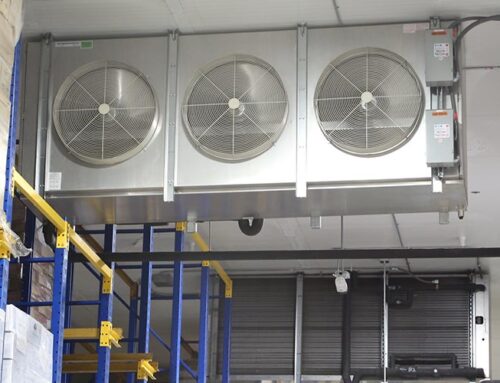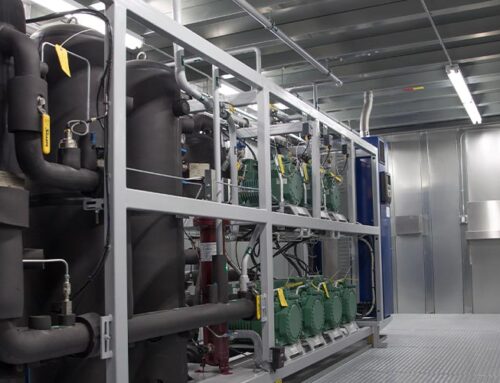CO2 Properties
|
NH3 Properties
|
- CO2 (R-744) is a natural refrigerant
|
- NH# (R-717) is a natural refrigerant
|
- CO2 has an Ozone Depleting Potential (ODP) of 0 and a Global Warming Potential (GWP) of 1 – the reference point for GWP
|
|
- It occurs in the atmosphere at concentrations over 410 parts per million [1]
|
- Ammonia forms in the air by the action of soil-bound nitrogen-fixing bacteria that exist on the roots of certain plants like alfalfa as well as some ocean algae [2]
|
- It is commonly available as a by-product many industrial processes including oil and gas production as well as ammonia production [3]
|
- Ammonia is widely produced through an industrial process resulting from the reaction of hydrogen and nitrogen in the presence of an iron catalyst and as much as 60 gigajoules of energy
|
- The boiling point is at -109.4 Fahrenheit and the critical point of CO2 is around +88 Fahrenheit
|
- ·Ammonia has a low boiling point (-28°F @ 0 psig) and a critical point of +221°F
|
- It is an acidic colorless gas at atmospheric pressures with a density about half as much than that of dry air
|
- It is colorless but has a sharp, pungent odor
|
| ——————————- |
——————————- |
CO2 Cons
|
NH3 Cons
|
- (Perceived) high saturated operating pressure of 407 psig at +20°F
|
- Use entails safety product contamination risks
|
- Steel and cooper-iron alloy tubing must be used on the high-side of booster systems due to higher discharge pressures at which the systems sometimes operate
|
- Limited material compatibility, ammonia is not compatible with yellow metals (brass, bronze, and copper)
|
- Requires special high-pressure compatible components
|
- Regular application of evaporative condensers entailing high water consumption, sewer drain, water pumps, water treatment system and associated chemical consumption
|
- Slightly lower compressor efficiency than ammonia systems
|
- Poor heat recovery quantity and quality
|
- Higher first costs than synthetic refrigerant systems
|
- Burdensome and costly regulatory compliance including General Duty Clause, OSHA PSM, and EPA RMP
|
| ——————————- |
——————————- |
CO2 Pros
|
NH3 Pros
|
- Lower first cost than ammonia systems
|
- Widely used throughout Industry
|
- Higher density than synthetics and ammonia meaning smaller compressors and refrigeration lines are needed
|
- R-717 is inexpensive and widely available
|
- Greater efficiency means smaller refrigeration lines and lower installation costs
|
- ·Large body of knowledge built up over years of experience with contractors and technicians
|
- Greater efficiencies achievable with advanced technologies including Adiabatic Gas Coolers, High Pressure Sub-coolers, Parallel Compression, and Gas Ejectors
|
- Theoretically slightly more efficient than that of R134a or propane [4]
|
- It is readily available and inexpensive compared to synthetic refrigerants (HCFCs and HFCs)
|
- Less energy required for pumping than some synthetics
|
- CO2 when used in booster systems under normal conditions works the same as other types of DX refrigeration widening the field of expertise familiar with it
|
- Self-alarming due to highly strikingly noticeable odor (but also creating increased liability for leaks in populated areas)
|
- High heat recovery potential, providing high quality hot water for processing applications
|
- Operating pressures comparable to those of other common refrigerants [5]
|
- Lower risk management requirements than many other refrigerants
|
|
- No EPA regulations for reporting losses and associated administrative costs
|
|
- Considered a next-generation refrigerant under the American Innovation and Manufacturing (AIM) Act of 2020
|
|




